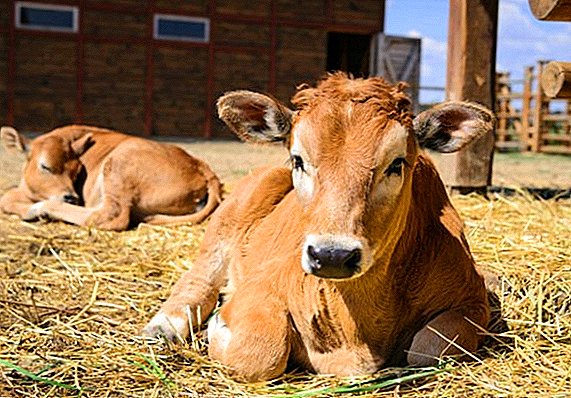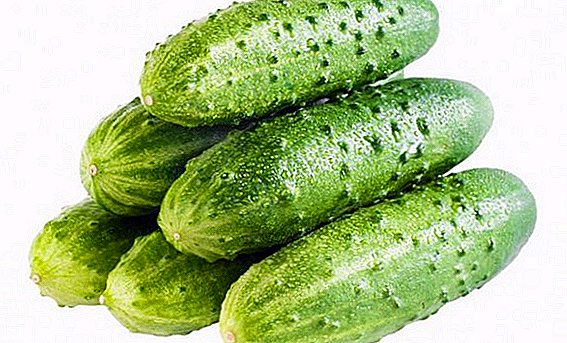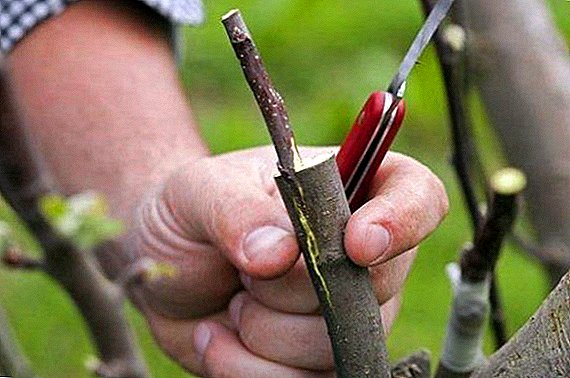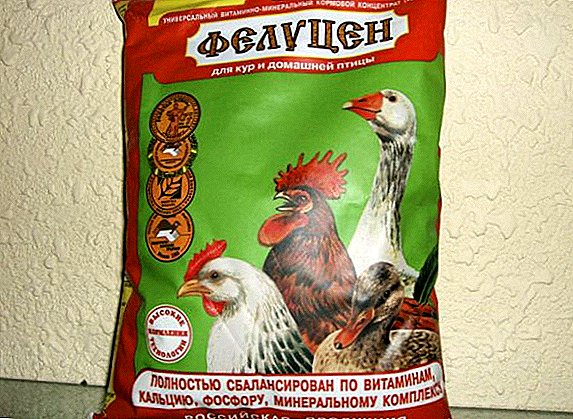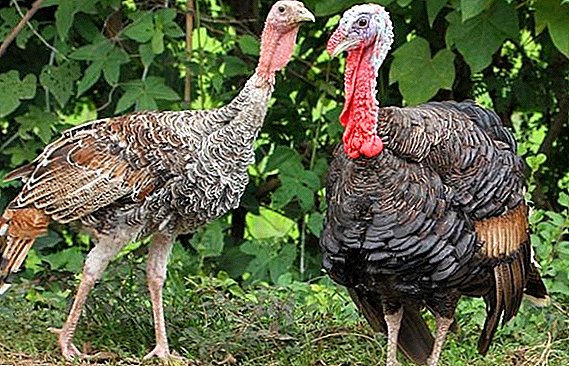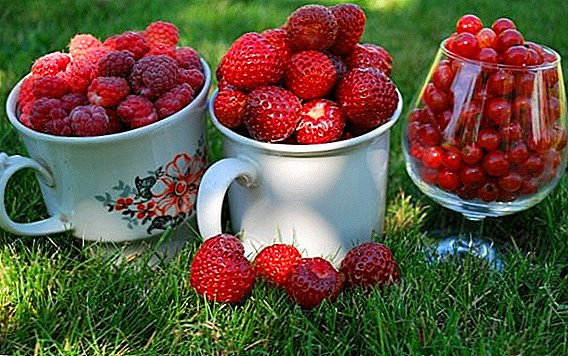
Geranium Pionovidnaya - a great representative of the family Geraniah. Its decoration allows you to create wonderful floral arrangements. And thanks to unpretentiousness and long flowering to create a beautiful flower beds can even a novice florist.
In this article we describe the features of growing geraniums Pionovidnoy, possible problems and how to solve them.
Botanical characteristics and history
The described geranium variety is a hybrid plant. This is the result of a long and hard work of breeders. Peony variety was designed exclusively as a decor for terraces, gardens, balconies and so on. In this species at the moment there are many subspecies.
The second name of this variety is terry. Leaf plates are quite dense, but at the same time soft. Their shade is even, without overflows, rich green. Over the whole area the leaves are slightly stewed.
Special attention should be paid to geranium buds. They are formed by a set of double petals. In some species, the inflorescence itself resembles a rose.. The terry geranium gives in to the “queen of flowers” only in one thing - it does not have such a captivating aroma.
Appearance
Pion-like geranium confused with other varieties is quite problematic. Flower buds are at the very top of the plant, which creates an image of a kind of "lady in a hat."
A characteristic feature of the petals is their diverse shade. And even on one plant there can be petals of different shades. This is due to the structure of the petals.
This variety of geranium differs in slightly large size compared with other members of this family. Petals reach a length of five centimeters, they are located on the bud in several rows. Exactly This geranium got its first name for similarity with peonies..
Description of varieties with photos
Below you can find a description of popular varieties of peony geraniums and see photos.
Rebbels
This variety has a bright crimson color, as well as large size bush. On the background of a low bush inflorescences seem particularly large.

Shelk moira
This is the work of Russian breeders. The author is considered a scientist from St. Petersburg - I. Kleimova. This variety has received recognition and widespread among both Russian and European flower growers. Variety is considered dwarf. The color of the petals is pale salmon. Buds look very advantageous against the background of dark leaf plates.
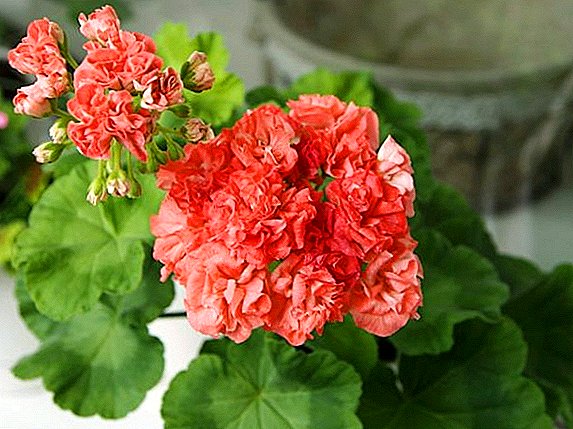
Brookside fantasy
The described variety is distinguished by bright shades, both leaves and petals. However, this does not prevent the geranium from impressing a very delicate and fragile plant.

Bold carmine
Petals of this variety are not just bright, but extremely saturated. The sizes are considered small, the bush itself has very compact dimensions. With proper and regular feeding, it forms and maintains buds longer than other representatives of the Pionidium geranium.

How to plant?
Choice of location and lighting
Geranium Pionovidnaya will best develop on the eastern and western sides of the room. She does not need a very bright light. Moreover, direct sunlight will damage the delicate leaves of the plant.
In the case when there is no other way to find another place, except as a southern window-sill, the plant should be attracted during particularly hot hours. This can be done using reflective foil or a regular sheet of paper.
But do not put geranium in the shadow of a permanent stay. In this case, she will not be able to please flower growers with open buds, and sometimes just a full-fledged development.
Soil requirements
Soil acidity must be neutral. Do not forget about the mandatory drainage layer, which will prevent the stagnation of moisture in the tank and ensure good air circulation.
Good nutritional substrate can be purchased at any flower shop. However, you can cook it at home. For this you need to prepare in advance the following components:
- turf;
- peat;
- humus;
- river sand.
All components should be in equal proportions, except for sand - they take it in half.
Do not forget about the constant loosening of the soil, since geraniums need good air circulation.
Care rules
Watering mode
 Geranium requires regular soil moistening. But at the same time, the plant will not transfer water droplets onto leafy plates, therefore, it is better to refuse spraying.
Geranium requires regular soil moistening. But at the same time, the plant will not transfer water droplets onto leafy plates, therefore, it is better to refuse spraying.
Getting on the foliage in the cold time, the water will lead to their decay, and in the warm - to sunburn.
But Do not overdo it with watering, since such a manipulation can lead to rotting of the root system, which will inevitably lead to the death of the entire plant.
On the lack of moisture will report small and sometimes unopened buds. Another sign of the lack of water can be leafy plates, or rather brown pigmentation on their reverse side. In such situations, watering is done either more frequently or more abundant.
In the hot period, geranium is best watered every other day., but in winter - only once a week.
Top dressing
This plant will respond favorably to the introduction of additional nutrition. In the spring and summer, fertilizers are applied every two weeks, and with the arrival of cold weather, fertilizing is reduced to once a month.
It is better to use ready-made mineral complexes for feeding. It is important that phosphorus is present in such fertilizers, which is responsible for long-term and lush flowering, as well as potassium and nitrogen, which are necessary to maintain the overall health of the plant.
Other recommendations
- The room in which the pionidium geranium is located should be aired regularly, but this procedure should not be converted into drafts.
- In the warm season, containers with flowers can be taken out into the open air, but the plant should be brought to the room during the first cold snaps. While geraniums are on the street, try to prevent a sharp drop in temperature and strong wind.
- In winter, plants for heating appliances should be avoided - they dry the air very much. For wintering, the air temperature is reduced to about 13 degrees Celsius.
Fertilizing during rest (it will last approximately from the end of November to the end of January) fertilization plants need to be stopped.
Diseases and pests
- Gray rot. The most comfortable condition for its development is considered a cold and damp room. The primary signs of this ailment are mild brownish pigmentation which is slightly expressed and slightly powdered. These spots become darker and larger over time.
- Rust. You can learn it by small stains of dirty brick color.
- Mealy dew. Differs white bloom on foliage and shoots.
- Aphid. This insect is dangerous in that it sucks the juices from the whole green part of the Pionidium geranium, which leads to the death of the plant.
- White fly. This pest contributes to the withering of the flower, and if you do not take resuscitation actions in time, the geranium will die completely.
It is necessary to fight the described pests with the help of insecticides. They treat the plant surface several times with a break of 5-7 days.
Breeding features
 Geranium Pionovidnuyu can be propagated in two ways - cuttings and seeds. The first method is suitable for year-round production of new plants, while the second is only for spring. Most gardeners choose cuttings. And this is not surprising. After all, this method is the least troublesome and most productive.
Geranium Pionovidnuyu can be propagated in two ways - cuttings and seeds. The first method is suitable for year-round production of new plants, while the second is only for spring. Most gardeners choose cuttings. And this is not surprising. After all, this method is the least troublesome and most productive.
Scion selects such that it has at least four leaves. After cutting, the stalk is placed in water until it releases the first roots. With the development of the root system, the stalk is placed in a small container with prepared soil and put in a well-lit place.
Seed breeding method uses more professional breeders. To do this, they sow them in the spring in the sand-humus substrate, which is pre-treated with a solution of potassium permanganate. This manipulation disinfects the ground.
The materials of this article will help beginner growers to grow a healthy and flourishing Peony Geranium. Manipulations for the care of a very simple, so if you adhere to all the recommendations, problems with growing should not arise.



